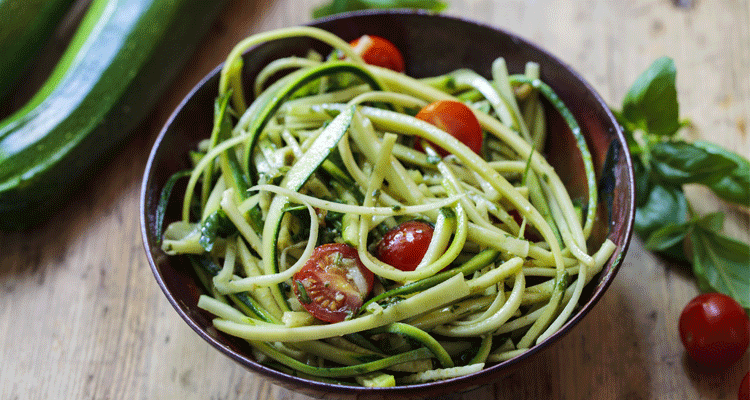Pictured: Zucchini ‘spaghetti’ with rough basil and walnut pesto and cherry tomatoes Over the past few years, ‘fake junk foods’ have become increasingly popular amongst health conscious foodies and have dominated food accounts on social media platforms like Instagram. Spiralized vegetables masquerading as pasta, avocado ice cream and sweet potato toast have become popular ways … Continue reading "A downside to zucchini noodles and other ‘fake junk foods’?"

Pictured: Zucchini ‘spaghetti’ with rough basil and walnut pesto and cherry tomatoes
Over the past few years, ‘fake junk foods’ have become increasingly popular amongst health conscious foodies and have dominated food accounts on social media platforms like Instagram.
Spiralized vegetables masquerading as pasta, avocado ice cream and sweet potato toast have become popular ways of giving the appearance of traditional junk foods, whilst containing a greater amount of nutrition and less calories.
Yet these seemingly healthier alternatives might not be as beneficial as they’re cracked up to be.
Kathleen Keller, a professor of nutritional sciences and food science at Penn State University in the US, told The Atlantic that consuming fake junk foods could lead to people eating up to 35% more food per meal, due to the fact that when consuming something they know is healthy, people tend to eat a larger portion than they normally would, a condition called the Snackwell effect.
Although many of the vegetables used as junk food replacements, contain much less sugar and have a higher nutritional value than many processed foods, Keller argues that by substituting the food group, it has a domino effect on negative food choices throughout the day:
“In the past when we’ve tried to substitute healthier versions for the real thing, that ends up backfiring because people just think, ‘Well, I ate these really healthy noodles so I can put a really rich sauce on them,’” she said. According to the professor, this means by using a food substitute people are more inclined to not just have a rich sauce, and a larger portion size, but they are more likely to have an extra snack later in the day.
Keller suggests that a way forward might be for these fake junk foods not to be pitched as a food replacement for processed food such as pasta but just as “a really interesting way to eat these vegetables.” Will the health food industry catch on? Watch this space.
